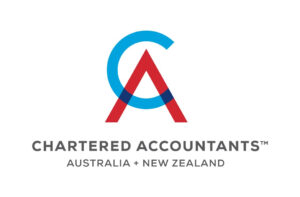Understand the rules, costs and risks of setting up an self-managed super fund (SMSF) to invest in residential property.
Self-managed super fund property rules
You can only buy property through your SMSF if you comply with the rules.
The property must:
-
meet the ‘sole purpose test’ of solely providing retirement benefits to fund members
-
not be acquired from a related party of a member
-
not be lived in by a fund member or any fund members’ related parties
-
not be rented by a fund member or any fund members’ related parties
If your SMSF purchases a commercial premises, it can be leased to a fund member for their business. However, it must be leased at the market rate and follow specific rules.
See the Australian Taxation Office website for more on SMSF rules.
What an SMSF property can cost you
SMSF property sales may have many fees and charges. These fees can add up and will reduce your super balance.
Find out all the costs before signing up. Costs include:
-
upfront fees
-
legal fees
-
advice fees
-
stamp duty
-
ongoing property management fees such as maintenance, rates, and insurance
-
commissions payable to developers and real estate agents
-
bank fees and loan costs, such as interest
Be wary of groups of advisers who recommend each other’s services. The referral fees they receive can create conflicts of interest. This may influence the advice you receive to set up an SMSF as well as the investments and specific services recommended.
It is important to get advice from a licensed financial adviser. Anyone who gives advice on an SMSF must have an Australian financial services (AFS) licence. ASIC Connect’s Professional Registers will tell you if the company or person holds an AFS licence or is authorised to provide financial advice.
SMSF borrowing to purchase property
Borrowing or gearing your super into property involves very strict borrowing conditions. It’s called a ‘limited recourse borrowing arrangement’ (LRBA).
You can only purchase a single asset with a LRBA. For example, a residential or commercial property. The ATO has more information about limited recourse borrowing arrangements.
You should assess whether investing in property is consistent with the investment strategy and risk profile of your SMSF.
Borrowing adds complexity to your SMSF, so it’s important to get advice from a licensed financial adviser. Ask the financial adviser to explain the following risks.
SMSF property risks include:
-
Higher costs – SMSF property loans tend to be more costly than other property loans.
-
Cash flow – Your fund must always have sufficient liquidity or cash flow to meet expenses. These may include the loan repayments, insurance premiums for the property and other property expenses such as rates or property management. The fund may also need to allow for retirement pension payments or lump sum withdrawals.
-
Loan balance – You need to ensure there is a strategy in place to repay the loan in the event of illness, disability or death of members, or rental vacancy.
-
Hard to cancel – If your SMSF property loan documents and contract aren’t set up correctly, you can’t unwind the arrangement. You may have to sell the property, potentially causing substantial losses to the SMSF.
-
Possible tax losses – You can’t offset tax losses from the property against your taxable income outside the fund.
-
No alterations to the property – You can’t make alterations that change the character of the property until you pay off the SMSF property loan.
Property developers and SMSFs
Property developers must have an AFS licence if they provide financial advice. Financial advice includes advice on setting up an SMSF.
Property developers may have a pre-existing business relationship with the professionals they recommended. They may receive a referral fee or other benefits that could amount to thousands of dollars.
Don’t be pressured into making property purchase decisions for an SMSF. Watch out for sales tactics like competitions, free flights to sales meetings or being taken out for free meals.
Think twice about investing in property markets you are not familiar with. Do your own research first.
Important: Make sure you get financial advice from someone who has an AFS licence.
Case Study
Kyle considers an SMSF
Kyle considered setting up an SMSF to use his super to purchase another investment property. He has a property portfolio worth $1 million (with investment loans of $800,000), $200,000 in super and no other investments.
After discussing his options with a financial adviser, Kyle decides that an SMSF is not right for him. He realises that a property investment through an SMSF would further increase his debt and reduce the diversification of his assets. Kyle is also concerned about the cost, time and responsibility required to run an SMSF, especially as he gets older.
Instead Kyle decides to concentrate on paying off his debt and making extra contributions to his super.
Source:
Reproduced with the permission of ASIC’s MoneySmart Team. This article was originally published at https://moneysmart.gov.au/property-investment/smsfs-and-property
Important note: This provides general information and hasn’t taken your circumstances into account. It’s important to consider your particular circumstances before deciding what’s right for you. Although the information is from sources considered reliable, we do not guarantee that it is accurate or complete. You should not rely upon it and should seek qualified advice before making any investment decision. Except where liability under any statute cannot be excluded, we do not accept any liability (whether under contract, tort or otherwise) for any resulting loss or damage of the reader or any other person. Past performance is not a reliable guide to future returns.
Important
Any information provided by the author detailed above is separate and external to our business and our Licensee. Neither our business nor our Licensee takes any responsibility for any action or any service provided by the author. Any links have been provided with permission for information purposes only and will take you to external websites, which are not connected to our company in any way. Note: Our company does not endorse and is not responsible for the accuracy of the contents/information contained within the linked site(s) accessible from this page.





